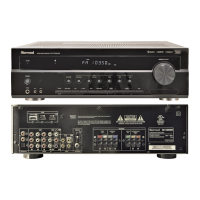6
ENGLISH
• The jacks of VIDEO 1 may also be connected to a DVD recorder or other digital video recording component.
For details, refer to the operating instructions of the component to be connected.
• The jacks of VIDEO 2 can also be connected to an additional video component such as a cable TV tuner or
satellite system.
• There are (composite) VIDEO jacks for analog video connections and the HDMI connectors for digital video and
audio connections.
• For your reference, the excellence in picture quality is as follows : "HDMI” > "(composite) VIDEO" .
■Note :
• When recording video program sources through the (composite) VIDEO 1 OUT jack or viewing video program
sources through the (composite) MONITOR OUT jack, you must connect the (composite) VIDEO IN jack to the
video playback components such as BD player, DVD player, etc.
■HDMI (High Definition Multimedia Interface) connection : (*)
• You can connect the source component (BD player, etc.) to the display component (TV, projector, etc.) through
this receiver with using a commercially available HDMI cord.
• The HDMI connection can carry uncompressed digital video signals and digital audio signals.
• This receiver can output digital video and digital audio signals from the HDMI MONITOR OUT of this receiver
without passing through any circuits as they were input into the HDMI IN(, meaning the audio signals which are
input into the HDMI IN cannot be reproduced on this receiver).
• HDMI, the HDMI logo and High-Definition Multimedia Interface are trademarks or registered trademarks of
HDMI licensing LLC.
■Notes :
• Depending on the connected component, unreliable signal transfer may happen.
(For details, refer to the operating instruction of your component.)
• For stable signal transfer, we recommend using HDMI cords that are a maximum of 5 meters in length.
2. CONNECTING VIDEO COMPONENTS
RD7405(A)100225_RD7405(A).qxp 2010-03-09 오전 9:47 페이지 6

